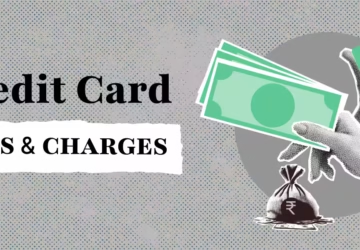“The less you own, the less that owns you.” – Joshua Becker
Contents🧘♂️ What Is Minimalism (and What It’s NOT)❌ Minimalism is NOT:✅ Minimalism IS:💸 How Minimalism Saves You Lakhs (Breakdown by Lifestyle Areas)1. 🛍️ Shopping Habits: From Impulse to Intention2. 🏠 Home & Lifestyle: Smaller, Simpler, Smarter3. 🚗 Transport & Gadgets: Needs > Ego4. 🍽️ Food & Entertainment: Conscious Joy5. 💼 Work & Income: Less Pressure, More Control📊 Real-Life Scenario: Traditional vs Minimalist🧠 Psychological Wins of Minimalism (Beyond the Money)✅ How to Start Minimalist Living (Even If You’re Busy or Broke)1. Declutter Your Physical Space2. Unsubscribe Ruthlessly3. Buy with the “30-Day Rule”4. Own Multipurpose Items5. Digital Minimalism📘 Books & Resources to Deepen Your Minimalist Mindset🧾 Final Takeaway: Less Isn’t Lack. It’s Leverage.💬 Ready to Save Lakhs and Breathe Freely?
In a world where we’re constantly bombarded with ads, offers, and pressure to own more, minimalism feels like rebellion—a rebellion that can save you lakhs of rupees while giving you back your time, energy, and peace of mind.
Minimalism isn’t about deprivation or living with nothing. It’s about choosing intentionally, spending mindfully, and freeing yourself from the cycle of consumerism that silently eats up your money.
In this blog, we’ll explore:
- What minimalism really is (beyond clean aesthetics)
- How it can help you save big money
- Real-life examples
- Actionable tips to start your minimalist money journey
🧘♂️ What Is Minimalism (and What It’s NOT)
Minimalism = Owning and spending only on what adds real value to your life.
It’s not about being cheap or never buying anything. It’s about being conscious.
❌ Minimalism is NOT:
- Living like a monk
- Hating money
- Never shopping again
✅ Minimalism IS:
- Spending money on what truly matters
- Letting go of excess to gain freedom
- Saying “no” to impulse, “yes” to purpose
💸 How Minimalism Saves You Lakhs (Breakdown by Lifestyle Areas)
1. 🛍️ Shopping Habits: From Impulse to Intention
Old mindset: “It’s on sale, let me buy it.”
Minimalist mindset: “Will this add long-term value to my life?”
Let’s say you usually spend ₹5,000/month on clothes, gadgets, decor, etc.
With minimalist habits, that could drop to ₹1,500/month.
Savings in a year = ₹42,000
2. 🏠 Home & Lifestyle: Smaller, Simpler, Smarter
- You don’t need a 3BHK for 2 people.
- You don’t need a ₹1 Lakh modular wardrobe full of clothes you rarely wear.
- You don’t need 4 streaming subscriptions.
Minimalists often:
- Live in smaller spaces
- Own fewer furniture & appliances
- Avoid decor overload
- Cut non-essential utility costs
Estimated yearly savings: ₹50,000–₹1,00,000+
3. 🚗 Transport & Gadgets: Needs > Ego
Minimalists:
- Keep phones for 3–4 years (not upgrading every launch)
- Avoid EMIs for showy vehicles
- Prefer efficient, purpose-driven purchases
Skipping a phone upgrade alone saves ₹1 Lakh in 3 years.
Avoiding a luxury car EMI? Easily saves you ₹5–10 Lakhs over time.
4. 🍽️ Food & Entertainment: Conscious Joy
Minimalists enjoy life, but mindfully.
Instead of:
- Weekly ₹3,000 dinners out → Once a month
- Ordering food 15 times/month → Down to 3–5
- Random weekend spends → Intentional experiences
Monthly savings: ₹6,000+ → ₹72,000/year
5. 💼 Work & Income: Less Pressure, More Control
Minimalists don’t need to chase money endlessly, because their needs are fewer.
This gives them:
- Power to say no to toxic jobs
- Freedom to explore meaningful careers or side hustles
- Lower stress & burnout
True wealth isn’t just earning more—it’s needing less.
📊 Real-Life Scenario: Traditional vs Minimalist
| Category | Traditional Spender | Minimalist |
|---|---|---|
| Clothing | ₹60,000/year | ₹15,000 |
| Gadgets/Phone | ₹1,20,000 (every 2 yrs) | ₹40,000 |
| Rent/House Size | ₹25,000/month | ₹15,000 |
| Dining & Lifestyle | ₹6,000/month | ₹2,000 |
| Subscriptions | ₹1,000/month | ₹300 |
| Annual Spend | ₹6.5–7 Lakhs | ₹3.5–4 Lakhs |
| Savings Difference | — | ₹3 Lakhs+ per year |
🧠 Psychological Wins of Minimalism (Beyond the Money)
- Less decision fatigue – fewer things = fewer choices
- Less clutter, more clarity – physical space = mental space
- More gratitude – you value what you have
- Less anxiety about money – your costs are low, savings are high
✅ How to Start Minimalist Living (Even If You’re Busy or Broke)
1. Declutter Your Physical Space
Start with one shelf or one drawer.
Ask: “Have I used this in the past year? Does it bring me joy?”
2. Unsubscribe Ruthlessly
Cancel what you don’t watch, read, or use.
3. Buy with the “30-Day Rule”
Wait 30 days before buying anything non-essential. Most urges vanish.
4. Own Multipurpose Items
One good backpack > 4 trendy ones.
One quality knife > 10 useless ones.
5. Digital Minimalism
Fewer apps, less screen time = more focus, less FOMO

📘 Books & Resources to Deepen Your Minimalist Mindset
- “The Minimalist Way” by Erica Layne
- “Digital Minimalism” by Cal Newport
- “Goodbye, Things” by Fumio Sasaki
- Netflix: Minimalism: A Documentary About the Important Things
🧾 Final Takeaway: Less Isn’t Lack. It’s Leverage.
Minimalism is one of the few life choices that gives you more freedom, more peace, more wealth—by choosing less.
It’s not just a lifestyle. It’s a financial strategy.
“You’ll be surprised how rich you feel when you stop buying things you don’t need.”
💬 Ready to Save Lakhs and Breathe Freely?
Comment “MINIMAL” and I’ll send you:
- A printable minimalist expense tracker
- A one-week declutter checklist
- 10 things to stop buying this year (to save ₹1 Lakh)








